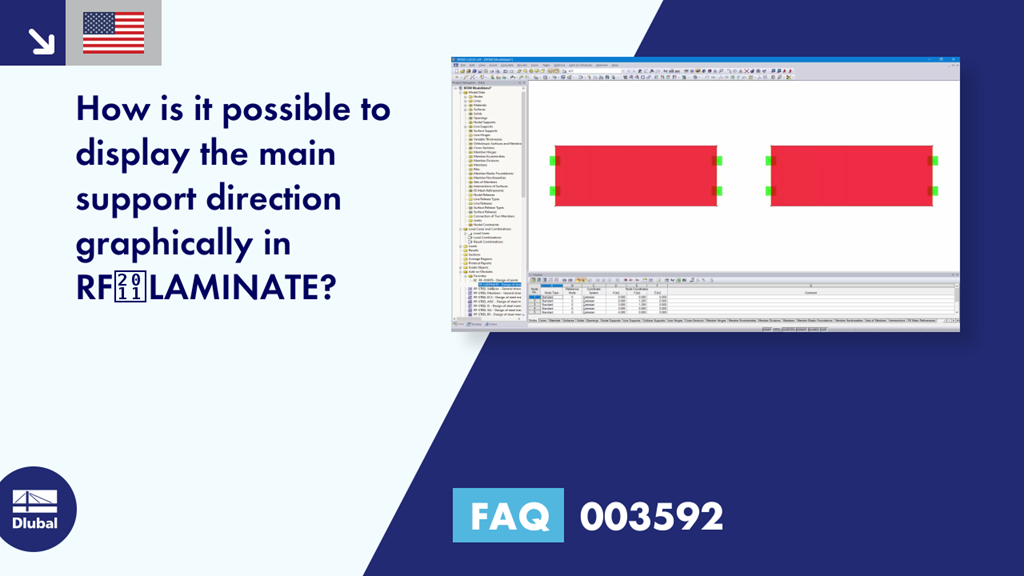Question:
How is it possible to display the main support direction graphically in RF‑LAMINATE?
Answer:
Displaying Main Support Direction in RF-LAMINATE Add-on Module
While entering data in the RF‑LAMINATE add-on module, there is an option to graphically control the orthotropic direction of each individual layer. To do this, simply place the cursor in the desired row of the corresponding position. Then, a coordinate system is displayed in the surface in the RFEM model (see Image 01). This is to be interpreted as follows:
red axis = x-axis = β-value of the corresponding layer
Generally, the outer layers specify the main support direction, which is why it is sufficient to consider only the first layer. The red axis specifies the primary load-bearing direction (see Image 01).
Displaying Main Support Direction in RFEM
However, the main support direction can also be interpreted directly in RFEM. To do this, you can display the local axis systems of the surfaces in detail (see Image 02). The orthotropic direction β refers to the local x‑axis of the surface. For the example shown in Image 03, this means that for the left surface, the main support direction runs from one support to another, and for the right surface, the secondary support direction runs from one support to another. If you want to change the support direction for the right surface, it is possible to either rotate the local surface axis system (see Image 04) or create a new structure and rotate the orthotropic direction β by 90° (see Image 05).
If the main support direction is not clearly evident, it is worth taking a look at the stiffness matrix of the surface (see Image 06). There, it is possible to find the "principal" support direction by means of the bending stiffness, for example. Element D‑11 refers to the local x‑axis of the surface, and element D‑22 refers to the local y‑axis of the surface.
